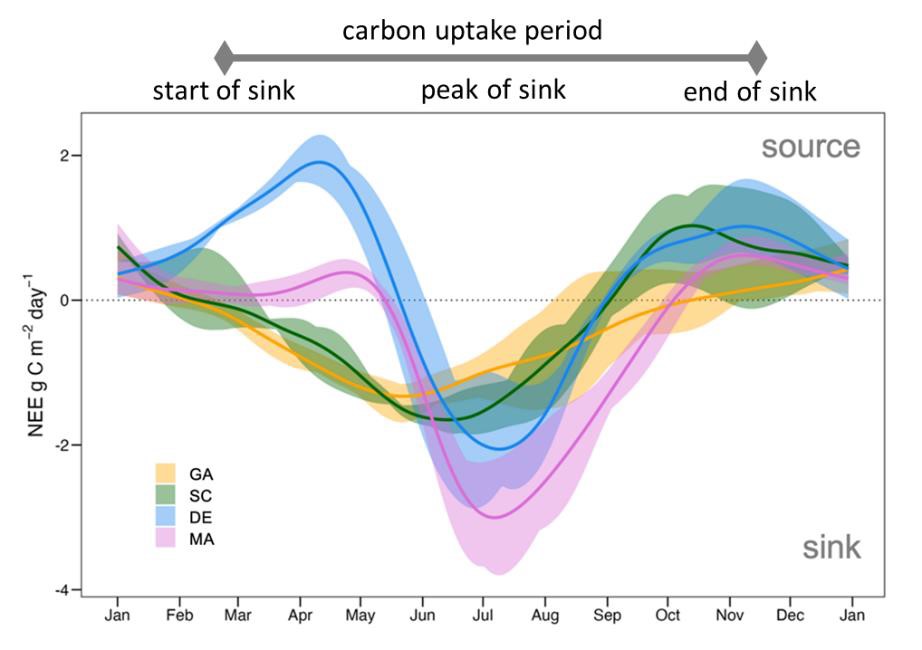GCE IV - Key Finding in 2024
Heterogeneity in tidal marsh C flux
Tidal marshes are productive ecosystems and important sinks of C on a global scale. As such, it is important to understand salt marsh productivity and how it varies over space and time. This can be challenging, as variation in tidal inundation, elevation and other environmental factors can affect plant performance, leading to considerable heterogeneity in productivity. Over the past several years, GCE PI Deepak Mishra and collaborators have used data from the GCE eddy covariance tower coupled with field observations and remote sensing to tease apart the causes and drivers of variability in tidal marsh C flux across the “flux tower marsh”, which is dominated by Spartina alterniflora. Hawman et al. (2024) analyzed 8 years of data and found that tidal marsh net ecosystem exchange (NEE) varies over seasonal cycles (highest C uptake during the growing season) and over 3-fold annually (lower uptake during drought years). It also varies within marsh zones, with 2-fold higher uptake at the marsh edge (tall canopy and higher biomass) than the interior (short canopy and lower biomass). Tidal flooding also affects NEE, as increases in inundation decrease emergent leaf area and thereby reduce carbon flux (Hawman et al. 2023). Mao et al. (2023) used pulse-amplitude modulated (PAM) measurements to quantify the photosynthetic performance of Spartina at different inundation levels in the field, and found that only 20% of the photosystem II reaction centers in S. alterniflora leaves are open for electron transfer when submerged. When we compared GCE NEE measurements with other flux towers along the east coast, we found latitudinal differences in tidal marsh C assimilation phenology, with differences in both the dates and length of the carbon uptake period (Hawman et al., in prep; Fig. 1). These studies provide us with information that we are using to reparametrize existing satellite-derived estimates of tidal marsh productivity (e.g., Feagin et al.2020) so stay tuned!
Fig. 1. Phenological curves of net ecosystem exchange (NEE) for four tidal marshes along the eastern US Atlantic Coast: Sapelo Island, Georgia; North Inlet, South Carolina; St. Jones, Delaware; and Plu m Island, Massachusetts. Solid lines are daily means, and shaded regions are the range. Source: Hawman et al., subm.


